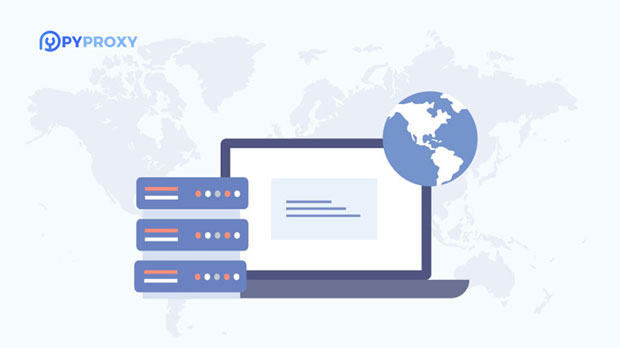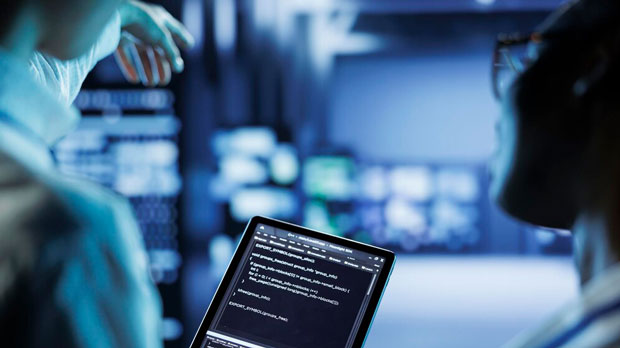PYPROXY’s mobile proxy server is an efficient tool designed to provide anonymity and bypass geo-restrictions for mobile users. With the increasing reliance on mobile devices for internet access, the importance of mobile proxy servers cannot be overstated. These servers play a crucial role in securing mobile traffic, ensuring privacy, and offering high-speed internet connectivity. One of the core questions that arises for users considering PyProxy’s mobile proxy server is: What types of protocols are supported? Understanding the protocol compatibility of mobile proxies is essential for optimizing the user experience, ensuring data security, and achieving specific use case objectives. In this article, we will explore the various protocol types that PyProxy’s mobile proxy server supports and analyze their significance in different networking environments. Introduction to PyProxy’s Mobile Proxy ServerA proxy server acts as an intermediary between a client device (such as a mobile phone) and the destination server it wishes to access. For mobile users, the primary purpose of a mobile proxy server is to route internet requests through a remote server, masking the user’s IP address and enhancing privacy. PyProxy’s mobile proxy server offers a seamless solution for mobile internet users looking to secure their browsing activities, avoid content restrictions, and improve overall network performance.When it comes to protocol types, PyProxy’s mobile proxy server supports several key protocols, each tailored to meet different requirements in the mobile ecosystem. The protocol types determine how data is transmitted between the mobile device and the proxy server, directly impacting speed, security, and reliability.Key Protocols Supported by PyProxy’s Mobile Proxy Server1. HTTP (HyperText Transfer Protocol) HTTP is one of the most commonly used protocols for accessing websites. PyProxy’s mobile proxy server fully supports HTTP, which allows users to browse the web while maintaining a level of anonymity. HTTP proxies are particularly beneficial for simple web browsing, where security is not the primary concern but rather the ability to mask the user’s IP address.2. HTTPS (HyperText Transfer Protocol Secure) Unlike HTTP, HTTPS provides an encrypted communication channel between the client and the server. PyProxy’s mobile proxy server supports HTTPS, ensuring that all data transmitted between the mobile device and the web server is encrypted. This is crucial for users who wish to maintain a high level of security, especially when transmitting sensitive information such as login credentials or payment details.3. SOCKS5 (Socket Secure Version 5) SOCKS5 is a protocol that operates at a lower level than HTTP and HTTPS, offering greater flexibility and support for a variety of traffic types. PyProxy’s mobile proxy server supports SOCKS5, which is advantageous for users who require more versatile proxy services. SOCKS5 can handle all types of traffic, including FTP, P2P, and gaming traffic, making it a suitable choice for users who need a proxy for non-HTTP/S protocols.4. FTP (File Transfer Protocol) For mobile users who need to transfer large files or manage remote files, FTP is an essential protocol. PyProxy’s mobile proxy server supports FTP proxies, allowing users to securely transfer files between servers and mobile devices. This is particularly useful for professionals in fields such as data management, web development, and remote work environments.5. WebSocket WebSocket is a protocol that facilitates real-time, bidirectional communication between a mobile device and a server. PyProxy’s mobile proxy server also supports WebSocket, making it an ideal solution for users who require low-latency communication, such as in online gaming or live-streaming applications. WebSocket allows for persistent connections, meaning that once established, data can flow continuously without the need for re-establishing a connection.Why Protocol Compatibility Matters in Mobile Proxy ServersThe choice of protocol used in a mobile proxy server is essential for optimizing various aspects of internet browsing. Each protocol has its specific use case, strengths, and limitations. Let’s break down why protocol compatibility matters when using a mobile proxy server.1. Security and Privacy Protocols like HTTPS and SOCKS5 provide an additional layer of security, making them essential for users who prioritize privacy. Mobile proxy servers supporting these protocols ensure that sensitive data is protected during transmission. For example, HTTPS ensures encryption, preventing hackers from intercepting communication between the mobile device and the server. SOCKS5, with its support for various traffic types, can also mask the user’s IP address, offering additional anonymity.2. Speed and Performance The choice of protocol can also significantly impact the speed and performance of a mobile proxy server. HTTP proxies, being simpler and more lightweight, typically offer faster browsing speeds. However, they lack encryption, which can make them unsuitable for secure browsing. On the other hand, protocols like SOCKS5 and WebSocket are more suitable for applications requiring real-time data transfers, offering a balance between speed and functionality.3. Use Case Compatibility Depending on the user’s specific needs, certain protocols may be more appropriate than others. For instance, a mobile user accessing social media platforms may find that an HTTP proxy is sufficient. However, if they are working with sensitive corporate data, HTTPS or SOCKS5 may be more appropriate. Similarly, users engaged in file transfers or real-time communication (e.g., online gaming or video conferencing) would benefit from FTP and WebSocket support, respectively.How PyProxy’s Mobile Proxy Server Enhances Mobile Experience1. Bypassing Geo-Restrictions and Censorship One of the primary uses of a mobile proxy server is to bypass geographic restrictions and censorship imposed by certain countries or websites. By supporting multiple protocols, PyProxy allows users to choose the most suitable protocol for their needs, whether it’s to access restricted content via HTTPS or to maintain anonymity with SOCKS5.2. Improved Mobile App Performance For mobile app developers, using a mobile proxy server can optimize app performance by allowing for faster content delivery and reduced latency. The support for WebSocket, for example, ensures smooth and real-time communication between users and servers, enhancing the overall user experience in mobile applications.3. Privacy and Security in Mobile Networks Mobile devices are particularly vulnerable to threats, as they often connect to public or unsecured networks. By utilizing a mobile proxy server that supports secure protocols like HTTPS and SOCKS5, mobile users can ensure that their browsing activity is kept private, reducing the risk of data breaches or unauthorized access.In conclusion, PyProxy’s mobile proxy server supports a wide range of protocols that enhance security, privacy, and performance for mobile users. By supporting HTTP, HTTPS, SOCKS5, FTP, and WebSocket, PyProxy ensures that users have the flexibility to select the most appropriate protocol for their specific needs. Whether you are browsing the web securely, transferring large files, or engaging in real-time communication, the right protocol can make all the difference. Understanding the various protocols and their advantages will help users make informed decisions and optimize their mobile proxy experience for maximum benefit.
Oct 22, 2025


































































